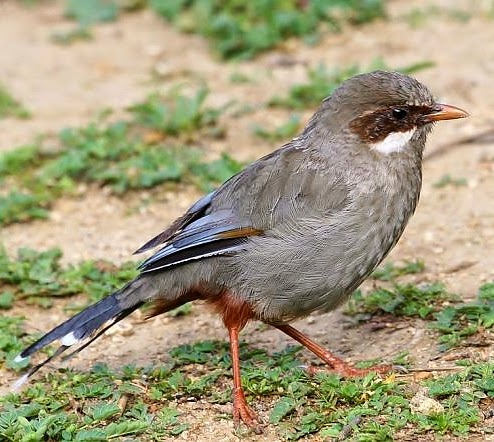 |
| Photo by Tang Jun (Oriental Bird Images) |
Common name:
brown-cheeked laughingthrush (en); zaragateiro-de-Henri (pt); garrulaxe de Henri (fr); charlatán de Henri (es); Prinzenhäherling (de)
Taxonomy:
Order Passeriformes
Family Timaliidae
Range:
This species is found in the Himalayas, in southern Xizang, China, in south-eastern Tibet, and marginally in extreme north-eastern India.
Size:
These birds are 24,5-26 cm long and weigh 60-70 g.
Habitat:
The brown-cheeked laughingtrush is mostly found in high-altitude scrublands, including pea trees Caragana sp. and the edges of moist tropical forests. They also use arable land and rural gardens. This species occurs at altitudes of 2.000-4.600 m.
Diet:
They feed on invertebrates and possibly also some vegetable matter.
Breeding:
These birds breed in May-September and are socially monogamous. The nest is an untidy cup made of dry grass, dead leaves, strips of bark and moss, and lined with dry grass. It is placed in a scrub, 0,5-2,5 m above the ground. There the female lays 2-3 eggs, which are incubated for 13-17 days. The chicks fledge 14-16 days after hatching.
Conservation:
IUCN status – LC (Least Concern)
This species has a large breeding range and is described as locally common to rare. The population trend is difficult to determine because of uncertainty over the impacts of habitat modification on population sizes.







